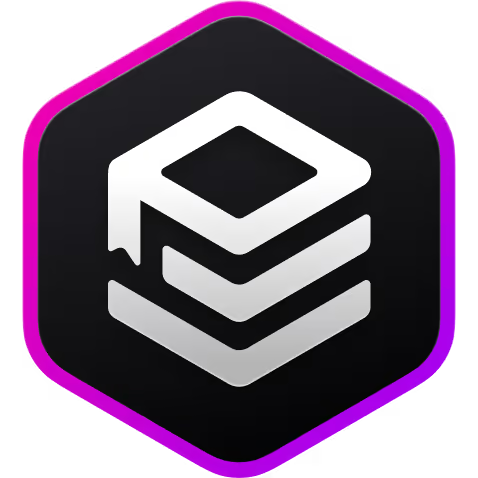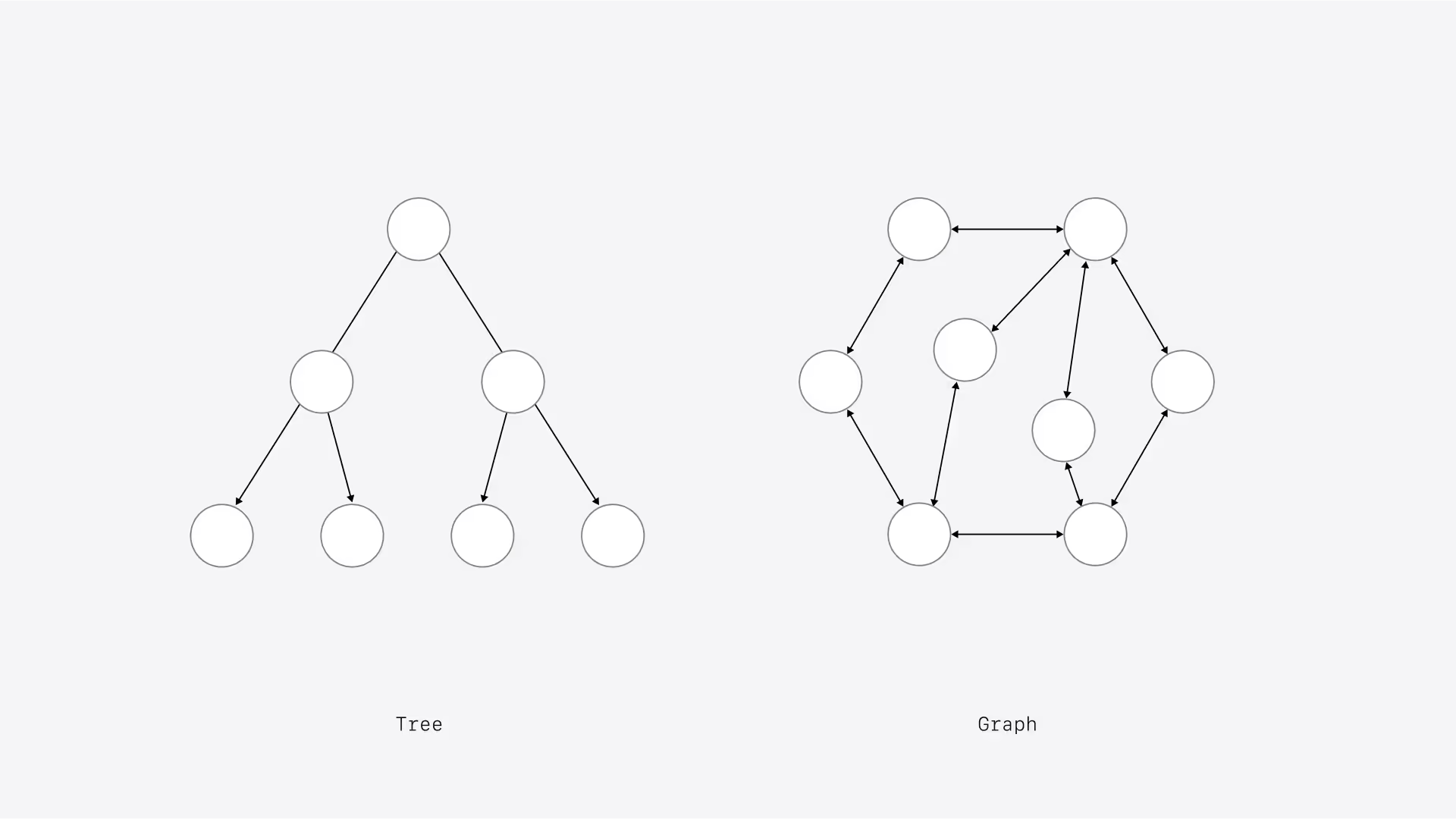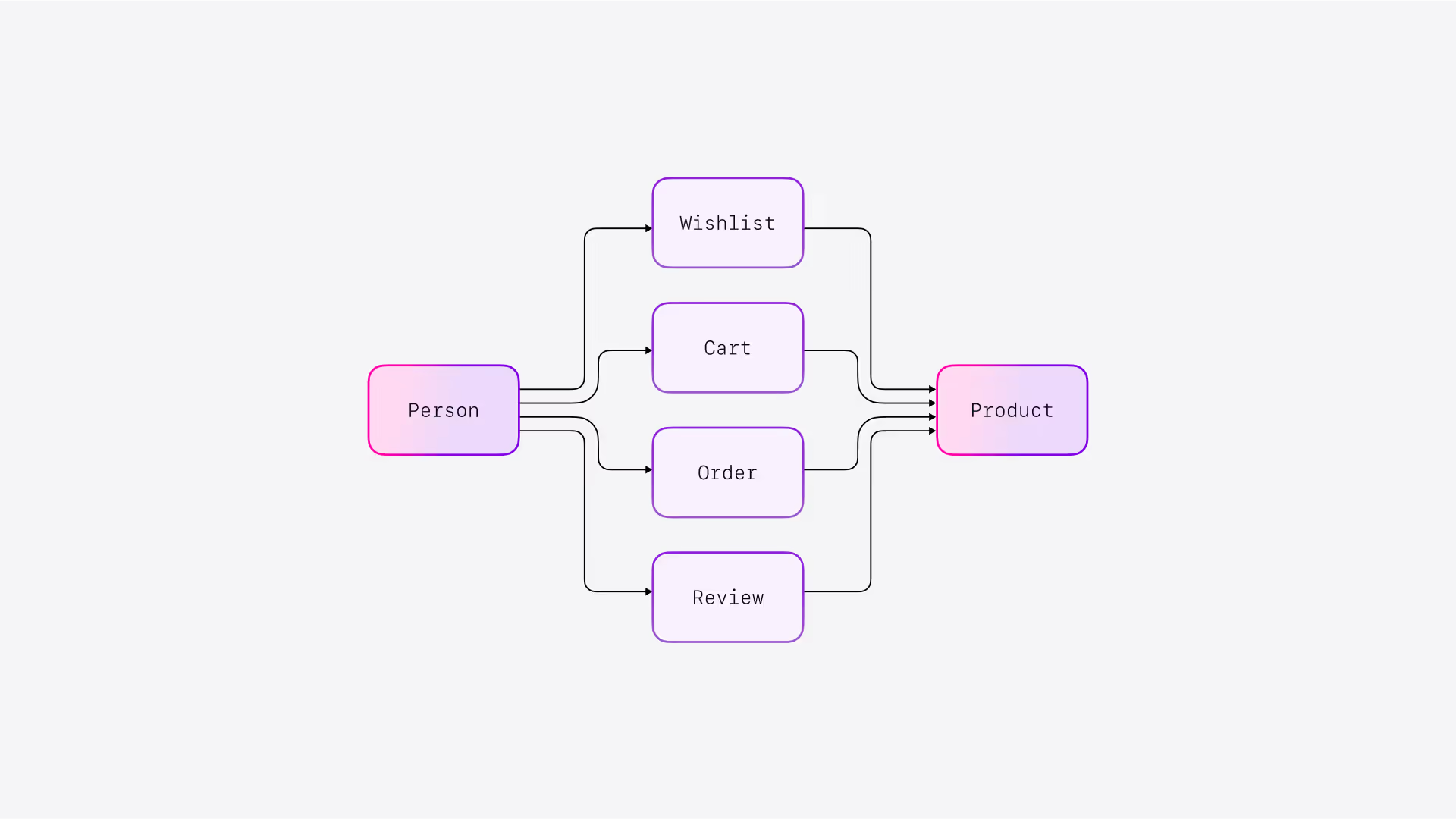

Authentication Required
This course requires authentication.
Please sign in to continue


This course requires authentication.
Please sign in to continue
The first relationship type we’ll explore is graph relations, we’ll go through.
RELATE
statementG equals a pair of V and E sets. G = (V, E).
That is the formal mathematical definition of a graph, but let’s translate that into normal language.
Graphs are just points connected by lines, which means they come in different shapes and sizes.

The points are called nodes
or vertices
and represent our main entities, such as your friends.
The lines are called edges
or links
and represent the relationships between nodes
, such as the connections between you and your friends.
Edges
can be both unidirectional, like in this tree example, and bidirectional like in the network example.
These are the fundamentals of how graphs work.
How this works in practice in most graph databases, is through something called semantic triples, which is a way to describe a graph in a three-part structure:
OR
Another way to think about this is in terms of nouns connected by verbs, such that it forms a sentence.
OR

RELATE
statementSurrealDB introduces a new statement called RELATE
using this three-part structure.
Using the RELATE
statement, we can create our primary relationships based on the major actions a person using our e-commerce store would take: wishlist, cart, order and review. These will serve as our edge tables.
The RELATE
statement works with one record ID at a time for each table.
Here, we are taking an existing record ID from the person
and product
table. Then for the middle tables which are the edge tables.
Those get created if they don’t already exist. We are also specifying that these new records should use a ULID
as an ID.
Once we run the RELATE
statement, we’ll see two new fields: in
and out
.
Now you might be wondering, when were these created since it didn’t seem like we specified them before. We did actually specify them using the RELATE
statement because another way of looking at the semantic triple is in the three-part structure
Where the first node is called in
, the edge is the id
, and the second node is the out
.
SET
and CONTENT
What really sets SurrealDB apart from graph-only databases, is that our edges are also real tables, meaning that you can store information in them, which allows for even more flexible data models.
We can both create our order
relationship and use it at the same time to fetch connected data from both the product
and person
tables.
Notice that the direction of the arrow changes based on the table we are fetching from.
Looking at the RELATE
statement, we can see that we only specified one direction, going from person to order to product.
However, the RELATE
statement creates a bidirectional graph by default, meaning that even if we only specified Person → order → product, it will also do person ← order ← product.
RELATE
just two tables
So far we’ve been focusing on connecting three tables in our semantic triple, we can however use just two tables as well, by having the in
and out
be the same Record ID.
RELATE product:01G0MW4VTG8QZR3A4BTEXHXWS7 -> product_sku:ulid() -> product:01G0MW4VTG8QZR3A4BTEXHXWS7;
There are two ways to INSERT
multiple relations.
The first way is by using the RELATION
clause on the INSERT
statement. It works the same way a normal INSERT
would, just with the in
and out
fields being required to specify the relationship.
The second way is using parameters to do a cartesian product.
This creates a relationship record for each combination of Record IDs. Such that if we have 10 records each in the person
and product
tables, we get 100 records in the order
edge table.
This should only be used with extreme caution as it can quickly use all your available resources, if allowed to, therefore it’s always good to add a TIMEOUT
clause when using this.
We’ve already covered how to create graph relations, let’s now explore how to use them in the rest of our CRUD operations.
You can use graph relations in any CRUD operation either by using the arrow syntax <- ->
or dot notation using in
and out
. Both are valid ways of querying the data.
Now that we’ve tackled learning graphs, let’s summarise what we’ve learned.
Graphs work by:
nodes
, also called vertices
, as your main entities.nodes
using edges
which can be unidirectional or bidirectionalLet’s also summarise what we have learned for the RELATE
statement:
RELATION
clause on the INSERT
statement, INSERT RELATION INTO
, is used to INSERT
multiple records. It works in the same way as a normal INSERT
would just with the in
and out
fields being required to specify the relationship.You can also use graph relations in any CRUD operation either by using the arrow syntax <- ->
or dot notation using in
and out
. Both are valid ways of querying the data.
That’s everything about graph relations, I’ll see you in the next lesson, where we’ll explore record links.